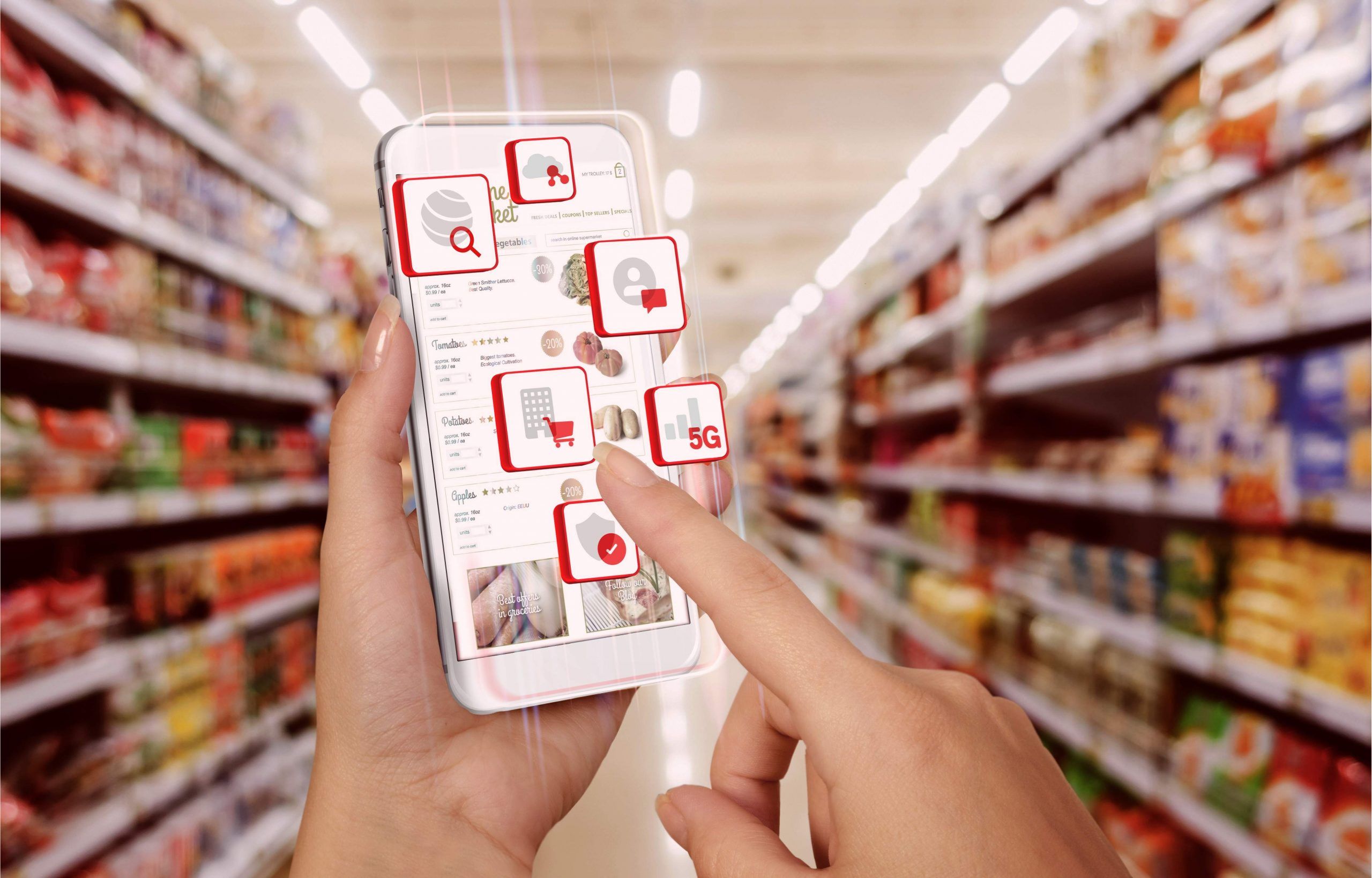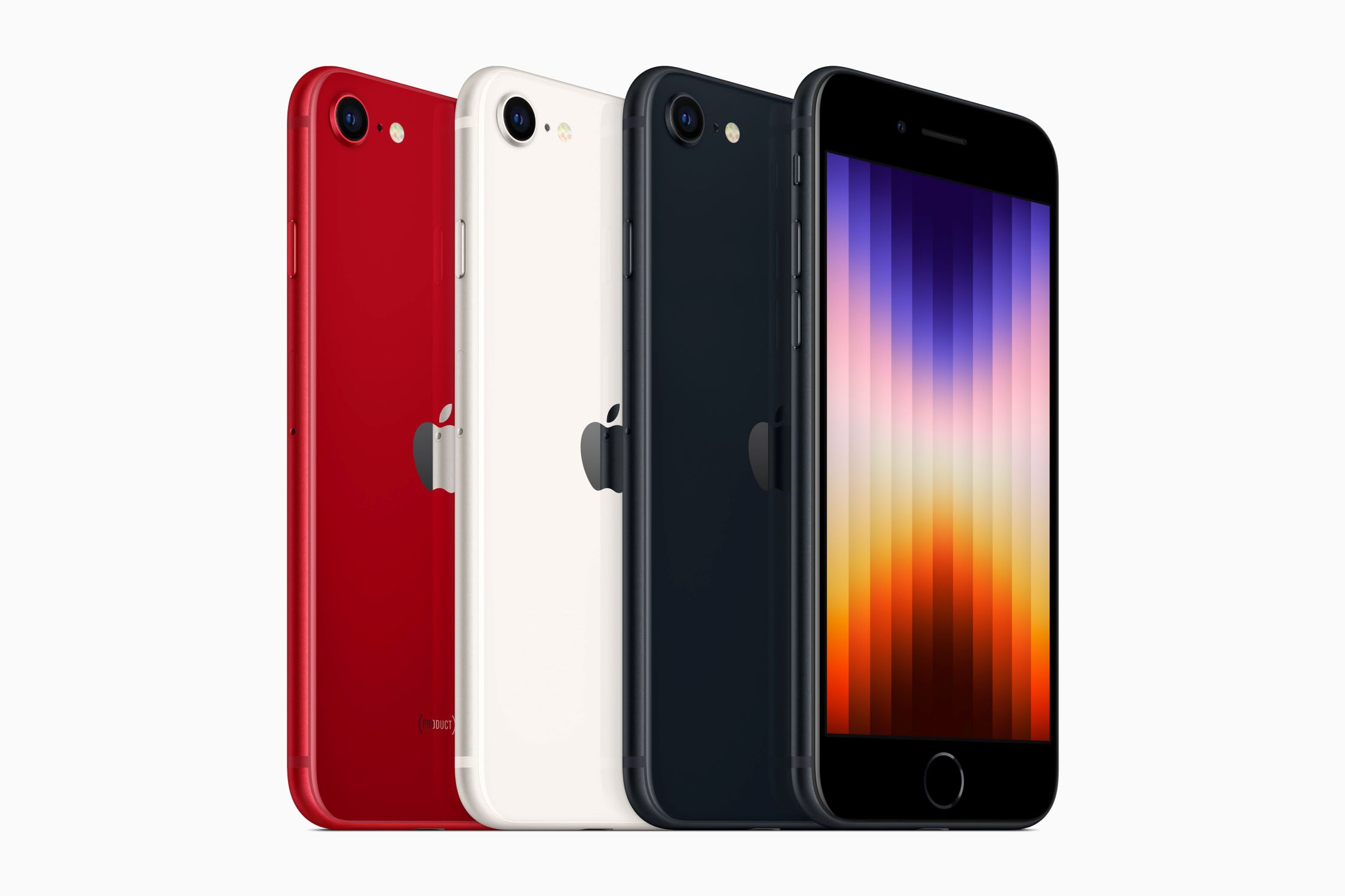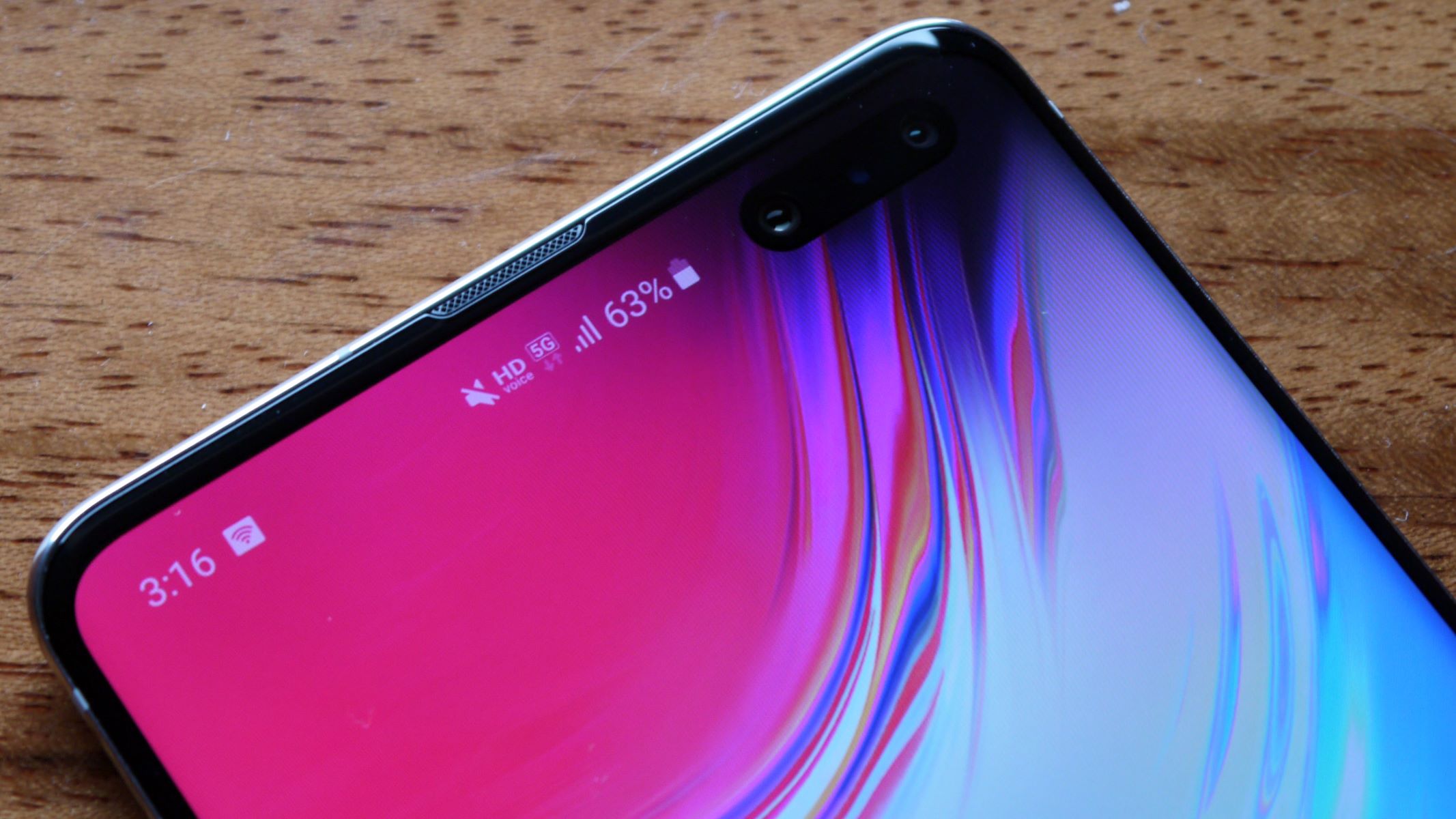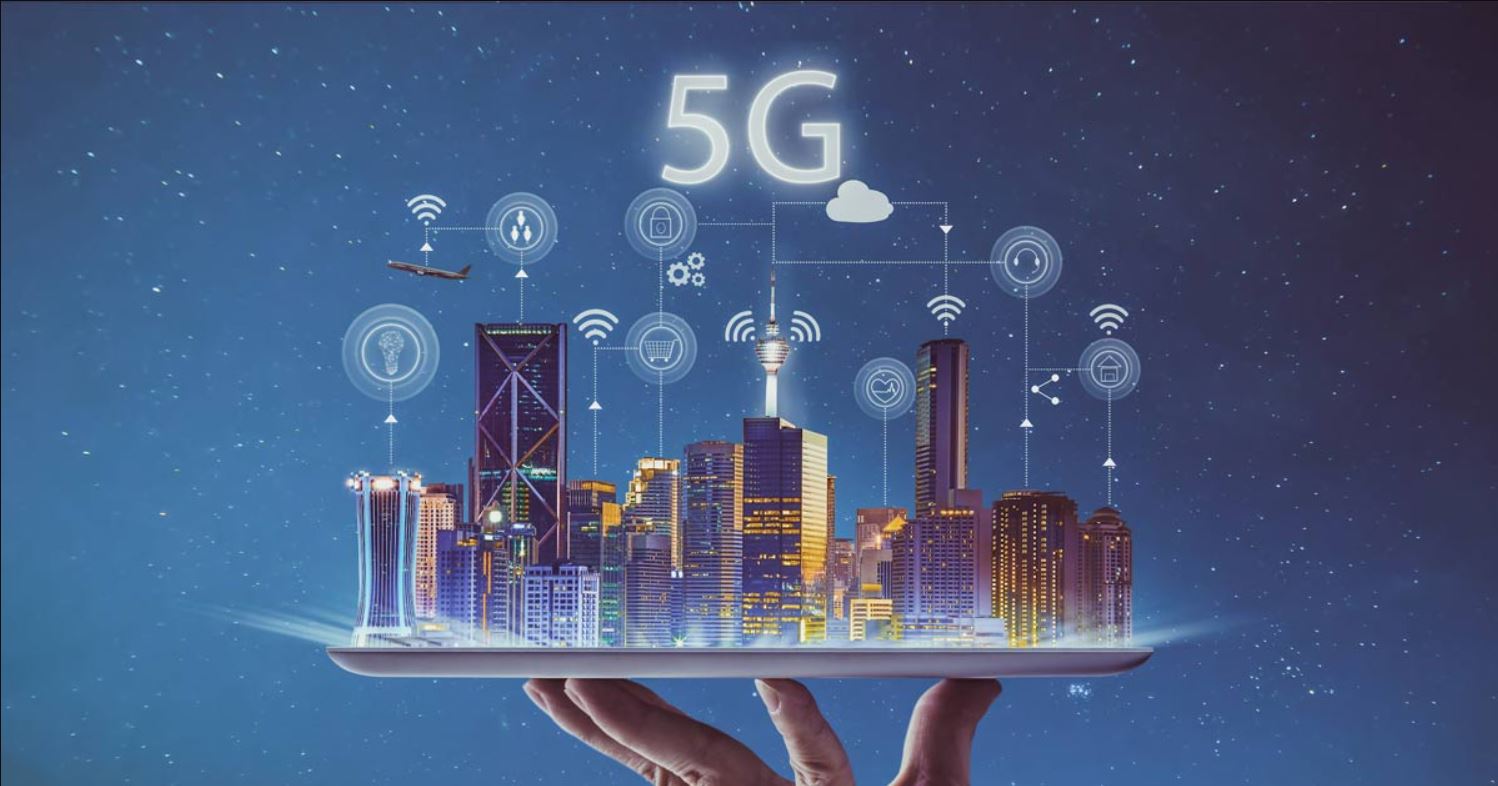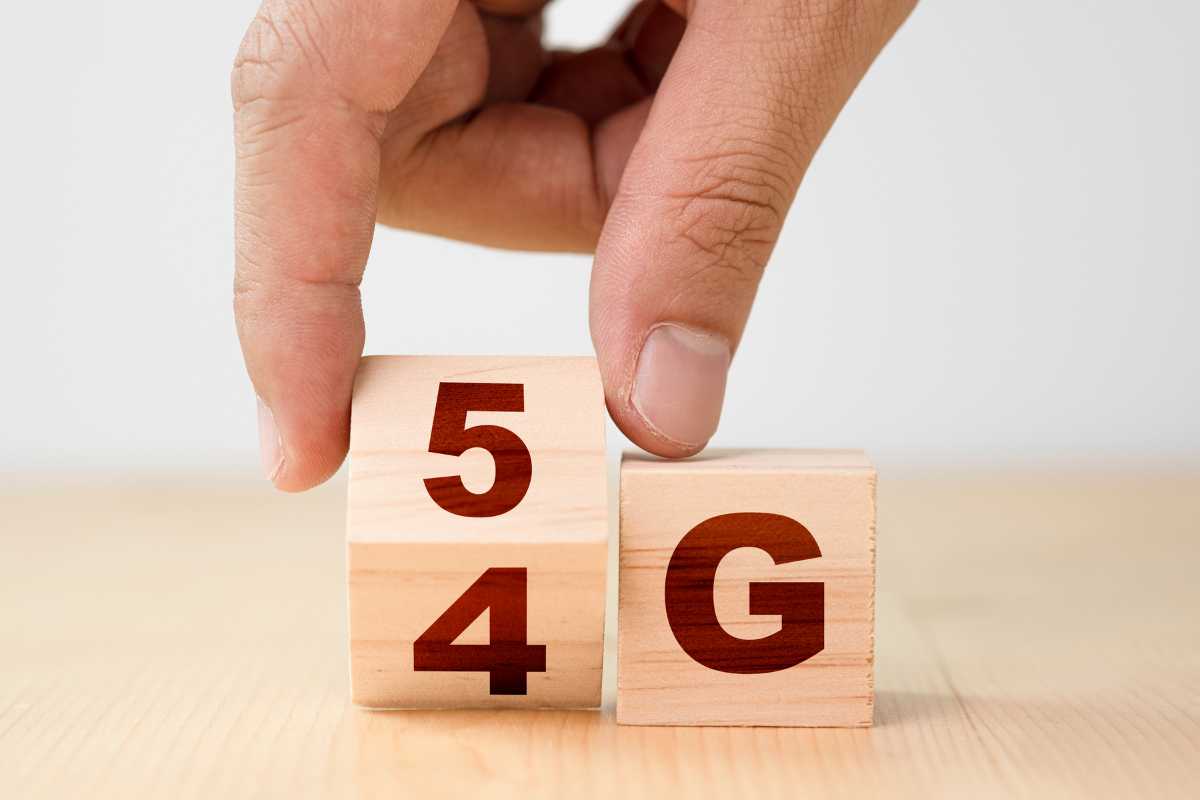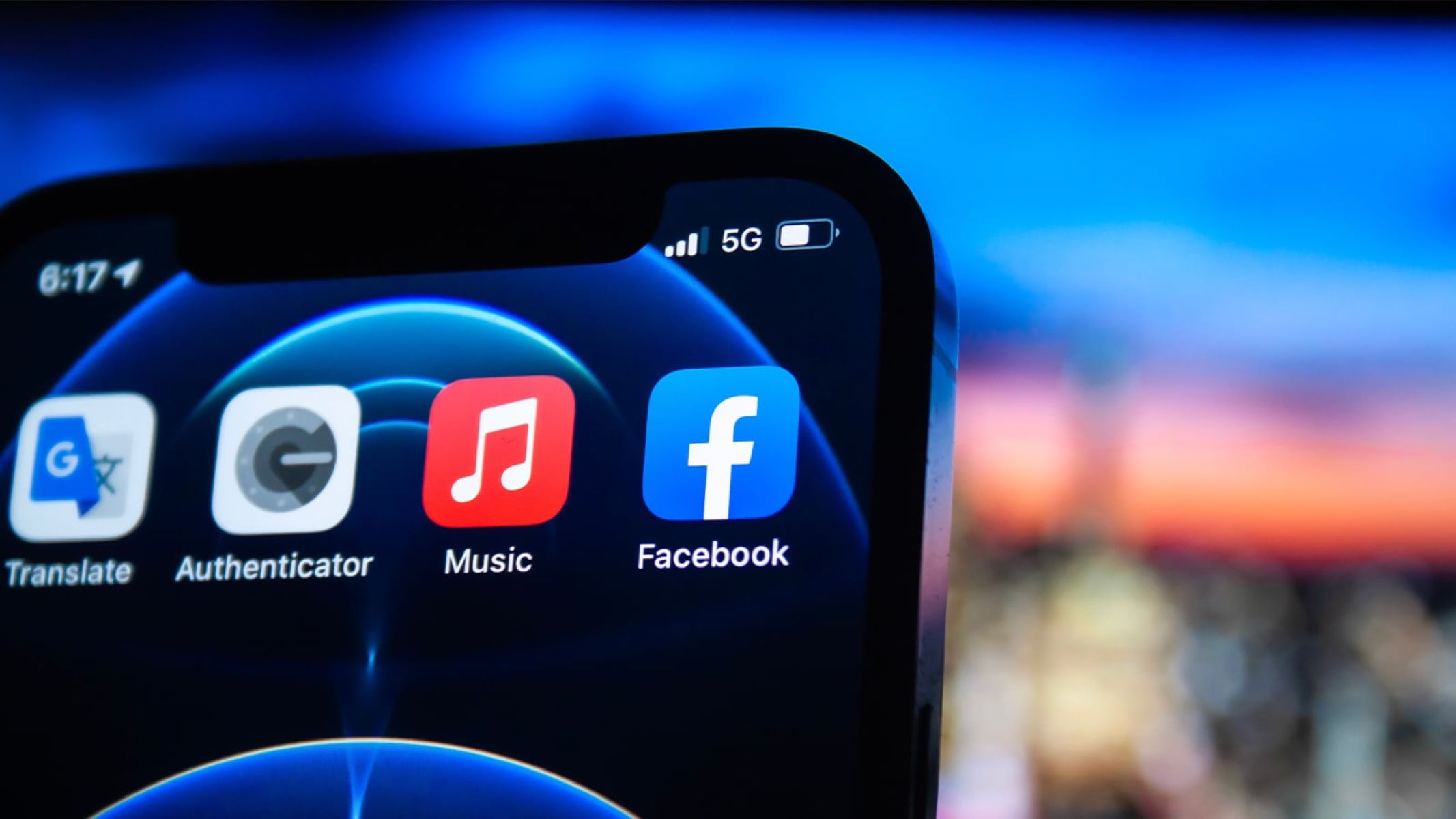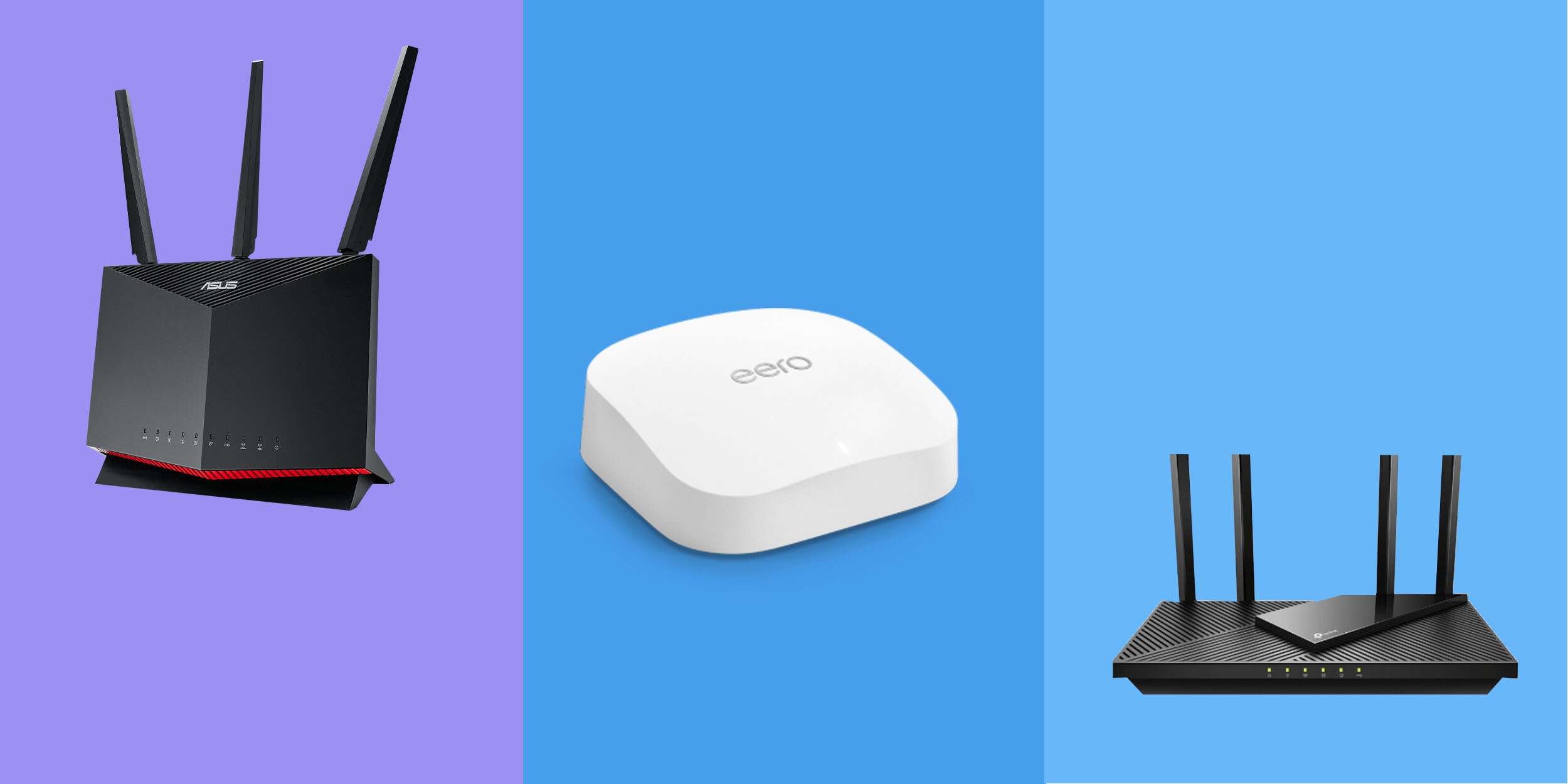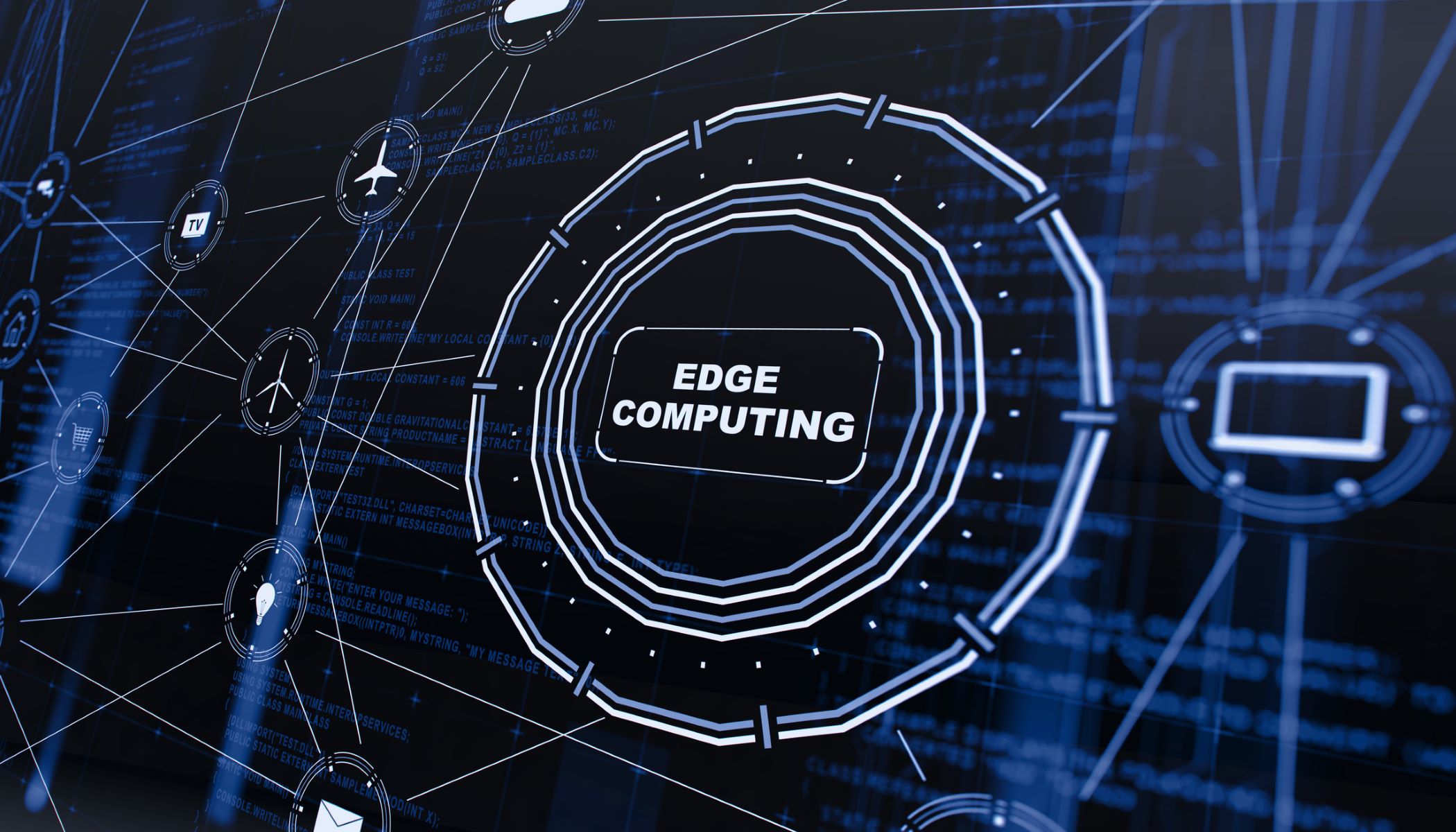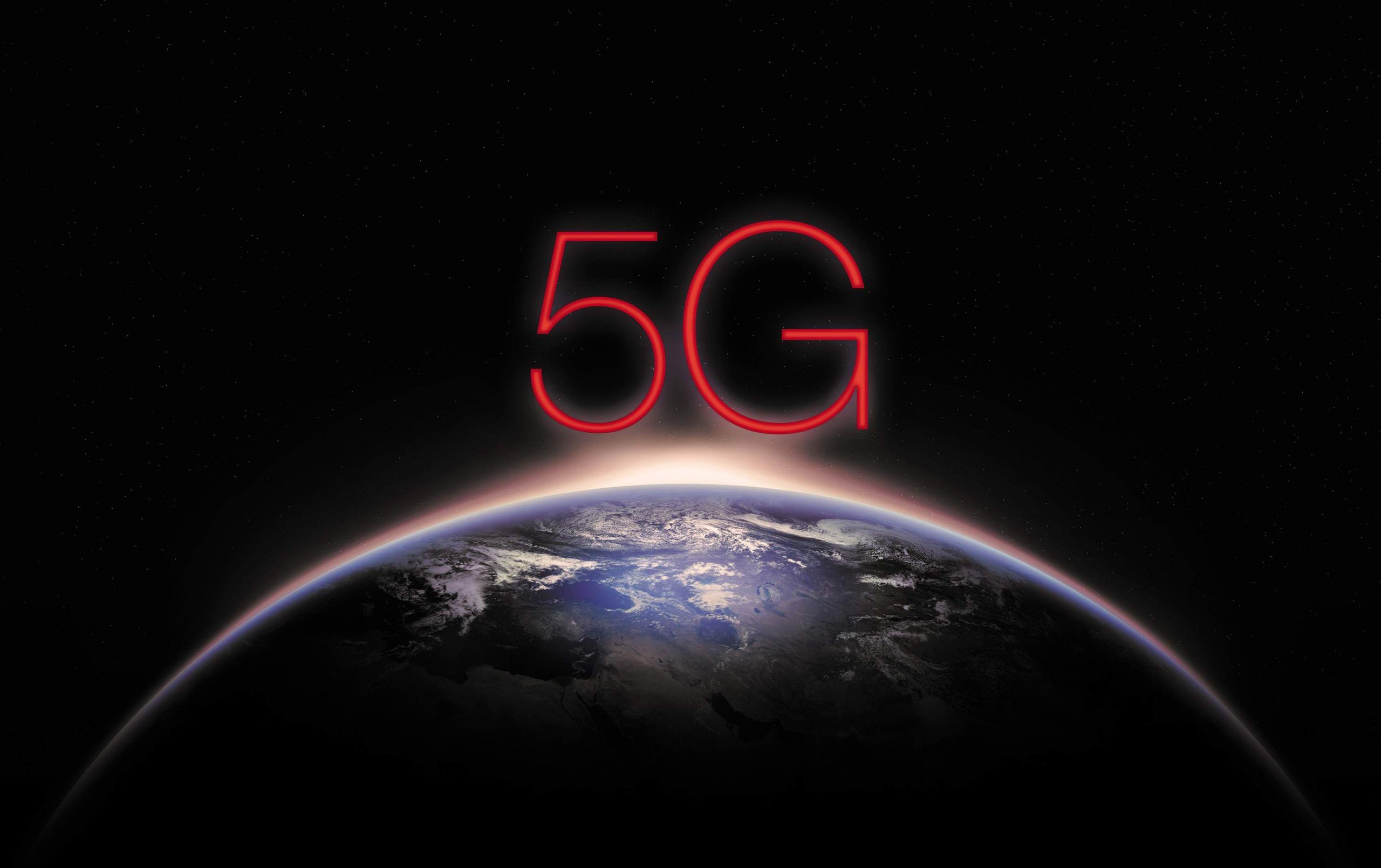Introduction
With the rapid advancements in technology, the internet has become an integral part of our daily lives. From smartphones and smart homes to wearables and industrial applications, the Internet of Things (IoT) has revolutionized the way we interact with the world around us. However, as the number of IoT devices and data continues to grow, there is a need for a faster and more reliable network to effectively handle the massive influx of information. This is where the fifth-generation (5G) technology comes into play.
5G technology is the next generation of wireless communication that promises to bring unparalleled speed, reduced latency, and increased connectivity to the IoT ecosystem. It takes the capabilities of the current 4G networks and amplifies them to a whole new level. By leveraging advanced technologies such as millimeter waves, massive MIMO (Multiple Input Multiple Output), and network slicing, 5G unlocks a plethora of benefits that enhance the functionality and performance of IoT devices.
In this article, we will explore the fusion of 5G technology and the Internet of Things. We will delve into the features of 5G that make it an ideal companion for IoT devices, and how it revolutionizes data transfer, latency reduction, capacity enhancement, reliability, and coverage. By the end, you will understand how 5G technology elevates the potential of IoT, paving the way for a more connected and advanced future.
What is 5G Technology?
5G technology represents the fifth generation of mobile network technology, succeeding the current 4G LTE (Long-Term Evolution) networks. It is designed to address the increasing demand for faster data speeds, higher connectivity, and improved performance. Unlike its predecessors, 5G is not just an incremental upgrade; it is a revolutionary leap that introduces significant advancements in network capabilities.
One of the key features of 5G is its remarkable speed. With theoretical download speeds of up to 10 gigabits per second (Gbps), 5G is about 100 times faster than 4G, enabling seamless streaming, downloading large files in seconds, and delivering an immersive user experience. This speed is achieved through the use of higher frequency spectrums, such as millimeter waves, which have a wider bandwidth and allow for faster data transfer.
In addition to speed, 5G technology also boasts reduced latency, which is the delay in data transmission between devices. With 5G, latency is expected to be as low as 1 millisecond, which is almost instantaneous. This near-zero latency is crucial for applications that require real-time interaction, such as autonomous vehicles, remote surgeries, and smart city infrastructure.
Another significant aspect of 5G is its increased capacity to support a massive number of connected devices. With IoT devices expected to reach billions in the coming years, the current network infrastructure may struggle to handle the immense volume of data. 5G utilizes advanced technologies like massive MIMO, which stands for Multiple Input Multiple Output, to efficiently manage multiple connections simultaneously. This allows for seamless connectivity in dense urban areas, stadiums, or other crowded environments.
Furthermore, 5G technology offers improved energy efficiency compared to previous generations. By optimizing the network infrastructure and minimizing power consumption, 5G networks can support a larger number of devices while reducing their environmental impact.
In summary, 5G technology is a new generation of mobile network connectivity that promises unprecedented speed, lower latency, increased capacity, and energy efficiency. These advancements lay the foundation for a truly connected world, enabling the seamless integration of IoT devices and unlocking a world of possibilities across various industries.
What is IoT?
The Internet of Things (IoT) refers to the network of physical devices, vehicles, appliances, and other objects that are embedded with sensors, software, and connectivity to enable them to collect and exchange data. These devices are interconnected through the internet, allowing them to communicate and interact with each other without human intervention.
The concept of IoT revolves around the idea of turning everyday objects into smart devices by equipping them with sensors and connectivity. These sensors can capture real-time data about their environment, such as temperature, humidity, motion, and more. The collected data is then transmitted over the internet to be analyzed and acted upon.
The applications of IoT are vast and diverse. From smart homes and wearables to industrial automation and smart cities, IoT has the potential to transform every aspect of our lives. In a smart home, for example, IoT devices like thermostats, security cameras, and voice assistants can be interconnected to create an intelligent living environment. Users can remotely control and monitor these devices through their smartphones, optimizing energy consumption, enhancing security, and improving convenience.
In the industrial sector, IoT enables the concept of Industry 4.0, where machines, equipment, and processes are interconnected to create a more efficient and productive manufacturing environment. IoT sensors can monitor machine performance, detect faults, and trigger maintenance requests automatically, minimizing downtime and improving overall productivity.
IoT also plays a crucial role in building smarter, more sustainable cities. By integrating IoT devices such as smart streetlights, waste management systems, and traffic sensors, cities can optimize resource usage, reduce energy consumption, and enhance public safety. For instance, smart parking systems using IoT sensors can guide drivers to available parking spaces, reducing traffic congestion and emissions.
In summary, IoT is the network of interconnected devices that collect and exchange data, enabling objects to become smarter and more efficient. By leveraging the power of connectivity and data analytics, IoT has the potential to revolutionize industries, enhance quality of life, and drive innovation in countless areas.
The Benefits of 5G for IoT
The combination of 5G technology and the Internet of Things (IoT) brings forth numerous benefits that enhance the functionality and performance of IoT devices. Let’s explore some of the key advantages of 5G for IoT:
1. Faster and More Efficient Data Transfer: 5G technology provides blazing-fast data transfer speeds, revolutionizing the way IoT devices communicate and exchange information. This high-speed connectivity enables real-time data collection, analysis, and response, leading to improved efficiency and faster decision-making.
2. Lower Latency: One of the major advantages of 5G for IoT is significantly reduced latency, allowing for near-instantaneous communication between devices. This low latency is invaluable for time-sensitive applications such as autonomous vehicles, remote surgeries, and smart city infrastructure, where even a few milliseconds of delay can have serious consequences.
3. Increased Capacity: With the exponential growth of IoT devices, there is a need for a network that can handle a massive number of connections simultaneously. 5G addresses this challenge by leveraging technologies such as massive MIMO (Multiple Input Multiple Output) and network slicing, enabling increased capacity and efficient management of multiple device connections.
4. Improved Reliability and Connectivity: 5G offers enhanced reliability compared to its predecessors, ensuring stable and uninterrupted connectivity for IoT devices. This reliability is crucial for critical applications such as healthcare monitoring, industrial automation, and public safety systems, where reliable connections can save lives and prevent costly disruptions.
5. Greater Range and Coverage: 5G technology extends the range and coverage area, allowing for seamless connectivity in both urban and rural environments. This expanded coverage enables IoT devices to be deployed in remote locations, opening up new possibilities across industries such as agriculture, environmental monitoring, and wildlife conservation.
6. Support for Massive Device Density: 5G networks are designed to support a massive number of connected devices within a given area, ensuring efficient connectivity in highly populated environments. This capability is essential for smart cities, large-scale industrial deployments, and events where a dense concentration of IoT devices is expected.
7. Energy Efficiency: With IoT devices becoming more prevalent, optimizing energy consumption is essential. 5G technology introduces energy-saving features that prolong the battery life of IoT devices, reducing power consumption and supporting sustainable IoT deployments.
In summary, 5G technology brings a myriad of benefits to the IoT ecosystem, including faster data transfer, lower latency, increased capacity, improved reliability and connectivity, greater range and coverage, support for massive device density, and energy efficiency. These advantages propel the IoT industry forward, enabling innovative applications and unlocking the full potential of a connected world.
Faster and More Efficient Data Transfer
One of the key benefits of 5G technology for the Internet of Things (IoT) is the ability to achieve faster and more efficient data transfer. With 5G networks, IoT devices can communicate and exchange information at significantly higher speeds, revolutionizing the way data is collected, analyzed, and utilized.
With theoretical download speeds of up to 10 gigabits per second (Gbps), 5G is approximately 100 times faster than the previous 4G networks. This tremendous speed allows IoT devices to transmit and receive large amounts of data in a fraction of the time, enabling real-time insights and instant responsiveness.
By harnessing the power of 5G, IoT applications can achieve faster data transfer rates, facilitating quicker data processing and analysis. For example, in industrial environments, real-time monitoring and control systems can utilize 5G to transmit sensor data to cloud-based analytics platforms almost instantaneously. This enables operators to make prompt decisions and take necessary actions based on up-to-date information, resulting in improved operational efficiency and reduced downtime.
Moreover, the increased data transfer speed provided by 5G allows for the seamless integration of immersive technologies such as virtual reality (VR) and augmented reality (AR) into IoT applications. Industries like healthcare, retail, and manufacturing can leverage these technologies to enhance training programs, improve customer experiences, and facilitate remote collaboration. With faster data transfer rates, IoT devices can transmit high-definition video, complex 3D models, and other media-rich content without lag or latency, providing a more immersive and interactive user experience.
Another aspect of faster data transfer with 5G is the ability to handle large-scale deployments of IoT devices. With millions, and even billions, of devices expected to be connected in the IoT ecosystem, efficient and rapid data transfer becomes crucial. 5G networks, with their high throughput, can accommodate the immense volume of data generated by IoT devices, allowing for smooth and uninterrupted communication between interconnected devices. This promotes scalability and facilitates the expansion of IoT deployments across various sectors, from smart cities to industrial automation.
Overall, the faster and more efficient data transfer enabled by 5G has a profound impact on the performance and capabilities of IoT devices. It allows for real-time data collection, analysis, and response, enabling industries to make informed decisions faster, improve operational efficiency, and deliver exceptional user experiences. With 5G, the potential for innovation and growth in the IoT space is boundless.
Lower Latency
One of the significant advantages of 5G technology for the Internet of Things (IoT) is its remarkable reduction in latency. Latency refers to the delay or lag in data transmission between devices. With 5G, the latency is expected to decrease to as low as 1 millisecond, virtually eliminating any perceptible delay and providing near-instantaneous communication.
The reduced latency offered by 5G is crucial for applications that require real-time interaction and near-instant responsiveness. Imagine a scenario where IoT devices are deployed in autonomous vehicles. These vehicles rely on continuous data exchange to make split-second decisions and navigate safely. With the low latency of 5G, the communication between the autonomous vehicles and other IoT devices, such as traffic sensors and infrastructure, is almost instantaneous. This enables seamless coordination, leading to enhanced safety and efficiency on the roads.
In the healthcare industry, lower latency provided by 5G paves the way for telemedicine and remote patient monitoring. Doctors and specialists can remotely monitor patients in real-time and perform virtual consultations with minimal delay. This immediate connection reduces the risk of delayed diagnoses and allows for more prompt and accurate medical interventions, especially in critical situations.
Lower latency also plays a crucial role in Industrial Internet of Things (IIoT) applications such as industrial automation and robotics. In manufacturing environments, 5G enables real-time feedback and control of interconnected devices on the production line, minimizing the response time between sensors, actuators, and control systems. This level of responsiveness contributes to improved efficiency, optimized workflows, and reduced downtime.
In addition to autonomous vehicles, healthcare, and industrial applications, low latency is also essential for gaming, virtual reality (VR), and augmented reality (AR) experiences. Gamers can enjoy seamless, lag-free online multiplayer experiences, while VR and AR applications can deliver immersive and realistic experiences, as the low latency ensures that content and interactions are instantly synchronized with the user’s movements.
Furthermore, in mission-critical applications such as public safety and emergency response, the reduced latency of 5G technologies can be life-saving. Emergency services personnel can communicate and receive real-time information without any noticeable delay, enabling quicker response times and coordinated actions.
In summary, the lower latency provided by 5G technology is a game-changer for the IoT ecosystem. It enables real-time and near-instantaneous communication between interconnected devices, propelling advancements in autonomous vehicles, healthcare, industrial automation, gaming, and emergency response. With ultra-low latency, 5G empowers the IoT industry to deliver faster, more efficient, and responsive solutions that enhance safety, productivity, and user experiences.
Increased Capacity
One of the key benefits that 5G technology brings to the Internet of Things (IoT) is its ability to support a massive increase in capacity. As the number of IoT devices continues to grow, there is a need for a network that can efficiently handle the ever-expanding volume of data and connections.
5G addresses this requirement by leveraging advanced technologies such as massive MIMO (Multiple Input Multiple Output), beamforming, and network slicing. These technologies allow for increased capacity, enabling the seamless connectivity of IoT devices even in densely populated areas and high-density environments.
Massive MIMO, for example, utilizes a larger number of antennas on the base station, allowing multiple devices to be served simultaneously. This enhances the capacity of the network, as more connections can be established within the same frequency band, resulting in higher data throughput and improved network efficiency. With massive MIMO, 5G networks can support a greater number of IoT devices concurrently without compromising the data transfer speed or quality of service.
Another technology that contributes to increased capacity is beamforming. Beamforming enables the network to focus its signal strength in specific directions, directing the signal towards the targeted device or area. This allows for more efficient use of available network resources, improving both coverage and capacity. With beamforming, 5G networks can serve IoT devices more effectively, particularly in areas with high device density, thus maximizing network capacity and performance.
Network slicing is another innovation that enhances capacity in 5G networks. Network slicing allows for the division of a physical network infrastructure into multiple virtual networks or slices, each tailored to specific requirements and services. This division enables the allocation of dedicated resources and bandwidth to different types of IoT devices, applications, or industries. By deploying network slicing, 5G networks can efficiently allocate resources based on demand, ensuring optimal usage of capacity and improving the overall performance of IoT applications.
The increased capacity of 5G is crucial for the continued growth and development of the IoT ecosystem. With billions of IoT devices expected to be connected in the near future, it is essential to have a network infrastructure that can handle the sheer volume of data and connections generated by these devices. 5G’s ability to support a high number of simultaneous connections ensures a smooth and uninterrupted user experience, regardless of the number of devices or the complexity of the IoT deployment.
In summary, 5G technology offers increased capacity that addresses the scalability needs of the Internet of Things. Through technologies like massive MIMO, beamforming, and network slicing, 5G networks can efficiently handle a large number of IoT devices, providing seamless connectivity, optimal resource allocation, and improved network performance. The increased capacity of 5G paves the way for the widespread adoption and advancement of IoT applications, enabling a smarter and more connected world.
Improved Reliability and Connectivity
5G technology brings significant improvements in both reliability and connectivity, ushering in a new era for the Internet of Things (IoT). The advanced features of 5G networks ensure stable and uninterrupted connectivity for IoT devices and enhance their overall performance.
One of the key factors contributing to improved reliability in 5G is the use of advanced antenna technologies such as massive MIMO (Multiple Input Multiple Output). Massive MIMO employs a larger number of antennas, allowing for better signal reception and transmission. This leads to increased signal strength, reduced interference, and improved overall network performance. With improved reliability, IoT devices can communicate seamlessly with the network, ensuring uninterrupted data transmission and facilitating seamless operation of IoT applications.
Furthermore, 5G networks implement beamforming technology, which enables a directed and focused wireless signal transmission. Rather than broadcasting signals in all directions, beamforming allows the network to concentrate the signal towards the intended device or area. This results in better signal quality, reduced signal degradation, and improved coverage. With enhanced connectivity, IoT devices can enjoy more stable connections, minimizing the chances of drops or interruptions in data communication.
Additionally, 5G networks have built-in redundancy and failover mechanisms to ensure reliable connectivity even in adverse conditions. For instance, 5G networks can quickly switch between different frequencies or network bands if one becomes congested or experiences issues. This dynamic network management helps to maintain a stable and reliable connection for IoT devices, even in high-density areas or during peak network usage times.
The reliability and connectivity improvements of 5G networks are particularly crucial in critical applications such as healthcare, transportation, and public safety. For example, in healthcare, reliable connectivity is essential for remote patient monitoring systems, ensuring vital health data is transmitted accurately and without interruption. In transportation, reliable connectivity enables real-time tracking and communication between autonomous vehicles, traffic management systems, and infrastructure, contributing to safer and more efficient transportation. In public safety, reliable connectivity ensures that emergency services can communicate effectively, providing timely responses and assistance.
In summary, 5G technology brings improved reliability and connectivity to the IoT ecosystem. Through the use of advanced antenna technologies, beamforming, and built-in redundancy mechanisms, 5G networks provide stable and uninterrupted connections for IoT devices. This enhanced reliability ensures seamless data transmission, optimal network performance, and facilitates the successful implementation of critical IoT applications across various sectors.
Greater Range and Coverage
5G technology offers a significant advantage for the Internet of Things (IoT) with its greater range and coverage capabilities. Compared to previous generations of wireless technology, 5G networks have the ability to provide wider coverage and reach areas that were previously challenging to connect.
The increased range and coverage of 5G networks are achieved through a combination of factors. First, 5G networks operate on higher frequency bands, including millimeter waves. These higher frequency bands have larger bandwidths, allowing for the transmission of more data over a greater distance. The use of millimeter waves in 5G networks enables the coverage of larger areas, making it easier to connect IoT devices even in outdoor environments or areas with sparse population.
In addition to higher frequency bands, 5G networks utilize advanced antenna technologies such as massive MIMO (Multiple Input Multiple Output) and beamforming. Massive MIMO uses a higher number of antennas on base stations, allowing for more precise and efficient signal transmission. This technology enhances coverage and range, as it can deliver a stronger and more focused signal to IoT devices, even at greater distances. Beamforming further improves coverage by directing the signal towards specific devices or areas, maximizing signal strength and minimizing signal degradation.
The greater range and coverage of 5G technology have significant implications for IoT applications across various sectors. In agriculture, for example, the ability to connect IoT devices in rural or remote areas enables farmers to monitor soil conditions, automate irrigation systems, and optimize crop management. This contributes to improved yields, reduced resource usage, and enhanced sustainability.
In smart cities, the wider coverage of 5G networks allows for the deployment of IoT devices in various urban environments, including public spaces, transportation systems, and critical infrastructure. IoT devices such as smart streetlights, traffic sensors, and waste management systems can be efficiently connected, enabling efficient resource management, enhanced public safety, and improved quality of life for residents.
Moreover, the greater range and coverage of 5G networks open up new opportunities for IoT applications in industries such as utilities, logistics, and environmental monitoring. Utilities can deploy IoT devices in remote areas to monitor energy grid infrastructure and optimize energy distribution. In logistics, IoT devices can be employed to track shipments and improve supply chain management across long distances. Environmental monitoring applications can benefit from the extended coverage of 5G, enabling the tracking of air quality, water levels, and climate patterns in vast regions.
In summary, the greater range and coverage capabilities of 5G technology enable the seamless connectivity of IoT devices over larger areas. Through higher frequency bands, advanced antenna technologies, and beamforming, 5G networks can connect devices in both urban and rural environments, facilitating the realization of IoT applications in agriculture, smart cities, utilities, logistics, and environmental monitoring. The extended coverage of 5G technology expands the possibilities for IoT deployments, contributing to more efficient, sustainable, and connected ecosystems.
Conclusion
The fusion of 5G technology and the Internet of Things (IoT) has the potential to revolutionize the way we interact with our increasingly connected world. 5G brings numerous benefits to the IoT ecosystem, enhancing data transfer, reducing latency, increasing capacity, improving reliability and connectivity, and extending range and coverage.
With faster and more efficient data transfer, 5G enables real-time insights and seamless communication between IoT devices. This empowers industries to make faster, data-driven decisions, optimize operations, and deliver enhanced user experiences. The lower latency offered by 5G ensures near-instantaneous communication, critical for time-sensitive applications such as autonomous vehicles, healthcare, and industrial automation.
5G’s increased capacity supports the growing number of IoT devices and their data-intensive requirements. Technologies like massive MIMO and network slicing enable efficient management of connections, ensuring smooth operation and optimal resource allocation. Improved reliability and connectivity provided by 5G ensure stable and uninterrupted connections between IoT devices, critical for applications in areas such as healthcare, transportation, and public safety.
Furthermore, 5G’s greater range and coverage extend IoT deployments to previously unreached areas, enabling comprehensive connectivity in both urban and rural environments. This creates new opportunities for industries such as agriculture, utilities, logistics, and environmental monitoring to leverage the power of IoT for improved efficiencies, sustainability, and resource management.
In conclusion, the combination of 5G technology and IoT holds immense potential for transforming industries, enhancing quality of life, and driving innovation. The deployment of 5G networks, with their faster speeds, lower latency, increased capacity, improved reliability and connectivity, and wider range and coverage, will unlock a new era of connectivity, creating a truly interconnected and intelligent world.







